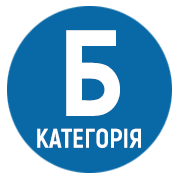COMPARATIVE ANALYSIS OF EXISTING INTENSIVE METHODS OF TEACHING FOREIGN LANGUAGES
Keywords:
comparative analysis, an intensive method, the intensification of training, methods of intensive foreign language trainingAbstract
The article deals with the study and analysis of comparable existing intensive methods of teaching foreign languages. This work is carried out to identify the positive and negative aspects of intensive methods of teaching foreign languages. The author traces the idea of rational organization and intensification of teaching foreign languages from their inception to the moment of their preparation in an integrated system. advantages and disadvantages of the most popular methods of intensive training also analyzed the characteristic of different historical periods, namely cugestopedichny method G. Lozanov method activation of reserve possibilities of students G. Kitaygorodskoy, emotional-semantic method I. Schechter, an intensive course of learning a foreign language L. Gegechkori , sugestokibernetichny integral method of accelerated learning a foreign language B. Petrusinskogo, a crash course in the study of spoken language by immersion A. Plesnevich. Analyzed the principles of learning and the role of each method in the development of methods of intensive foreign language training. The author identified a number of advantages and disadvantages of intensive methods of teaching foreign languages: 1) the assimilation of a large number of linguistic, lexical and grammatical units; 2) active use of acquired knowledge, skills and abilities in the practice of oral speech communication in a foreign language; 3) the ability to use language material resulting not only in his speech, but also in understanding the interlocutor; 4) overcoming psychological barriers, including fear of the possibility of making a mistake; 5) high efficiency and fast learning; 6) too much new language material that is presented; 7) training of oral forms of communication; 8) decline of grammatical units and models.
References
Кашина Е. Г. Традиции и инновации в методике преподавания иностранного языка: учеб. пособие для студентов филологических факультетов университетов / Е. Г. Кашина. – Самара: Универс-групп, 2006. – 75 с.
Китайгородская Г. A. Методика интенсивного обучения иностранным языкам / Г. А. Китайгородская. – М.: Высшая школа, 1986. – 112 с.
Леонтьев А. А. Общая методика обучения иностранным языкам / А. А. Леонтьев. – М.: Высшая школа, 1991. – 85 с.
Методика изучения языков. Метод Лозанова. – Суггестология – изучение внушения и внушаемости. [Електронний ресурс] – Режим доступу: http://filolingvia.com/publ/67-1-0-104.
Профессионально-ориентированное обучение иностранному языку на неязыковых факультетах вузов: учебное пособие; под ред. П. И. Образцова. – Орел: ОГУ, 2005. – 114 с.
Clark K. The design and implementation of an English immersion program / K. Clark. // The ABC’s of English immersion: A teacher guide. – Washington, DC: Center for Equal Opportunity, 2000. – 44 p.
Walker C. L. The complexity of immersion education: Teachers, addresses and issues / C. L. Walker, D. J. Tedick. // Modern Language Journal. – 2000. – Vol. 1, № 84. – P. 931–940.






